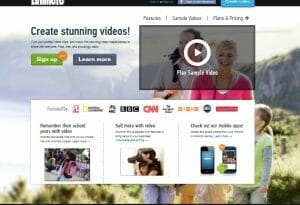It’s that special magical moment we are all looking for, brilliantly written content that people actually like, love and share. Content that goes viral across the globe on its own and content that makes you or your client’s website stand out from the competition.
I have been writing on my own Dead Dinosaur blog for more than six years now, and the main problem with being a blogger or community manager is deciding what to write about and comment on. You sit there scratching your head sometimes thinking what is it that makes our readers chat online? What do they already talk about? What pushes their buttons? How can I tap into this?
I talked about this very subject last year when I was delivering my CIPR seminars on driving digital campaigns as part of my work for the CIPR committee.
These are the questions every digital marketer and PR person should be asking themselves on a regular basis because it is us who are crafting these strategic content plans. It is usually our job to help make their site great and get people talking. However, if the truth be known not every client has something exciting to say every day – unless you are working for Apple. No, our job is to make our clients as interesting and sharable as we can and most of us are pretty good at it.
I have seen so many bloggers complain about writer’s block but for me that isn’t really the fundamental problem of doing this job. My problem with blogging or social media of any kind for myself, is simply time these days – that one resource none of us have enough of. If I don’t post on here for a while, you can be pretty sure that it’s not due to the lack of ideas but more because I am busy (like all of us are) delivering client work and trying to pay our bills.
However, writers block can occur to the best of us and we can all struggle to decide what to post about next. So I have had a good long think and scoured the internet to identify the best types of content to give you some ideas for that all important blog post or Facebook update you may have planned.
1. Funny content that makes you crack a laugh!
We all love the stuff that makes us laugh out loud but often the trouble is our clients often don’t want us to share that type of content as it can be potentially risky. The truth is sharing is mainly based around humour and making people laugh. We like to share funny stuff – it used to happen on a Friday afternoon with work emails being circulated many moons ago but now that’s moved across to our social networks too.
If you can risk talking about a subject that is taboo and stick it in your blog post title you may well get a lot of traffic. I have known several bloggers use risqué titles in blog posts just to get the traffic but if the content is funny and on the money for the audience – why not share it?
2. Lists – We all love them
You are reading this list aren’t you? Why? Because we all love a cleverly put together and concise list. Is there a list that hasn’t been written yet? Is there one that needs updating? It will take time but why not create one yourself from scratch? I do it all of the time when I have spent hours compiling them because I want to share them with you guys. In case you missed it check out the list I did on the UK’s top PR Bloggers or my list of the Top Gardening bloggers.
3. Content that challenges common ground and people’s assumptions
I often see blog posts where people question people’s assumptions or question what the masses are doing. I expect to see lots of “Ten reasons not to choose an iPhone 5 posts” over the coming weeks. Why do people write these? It’s pretty simple because they will get read, viewed and shared. The iPhone example however, will be because people are simply using recent keywords to try and get traffic. I would argue is it the right kind of traffic but never the less it’s traffic to your site.
All you have to do here is find an assumption that people have in your or your client’s sector and challenge it in a post. Just have an opinion – they make the best blog posts. Don’t just report the news that is dull.
4. Content that is written for humans not for bloody Google
OK this is one area I really get irritated about and will argue until the cows come home. Yes content is great for SEO but don’t write your content for search robots. Sure use the best keywords but write your piece for people to read and have an opinion on. If you don’t agree with this point fine – tell me then in the comments section. All engagement is welcome that is the point of soical media in the first place.
5. Content about changes or improvements to your service
If you (or your client) have improved your product or launched a new service, tell people about it. Let them in – walk them through what’s different about it?
6. Problem solving – give specific advice and consider using video
I think it’s fair to say that a vast amount of blog articles explain how they are going to solve your problems but then once you read them they solve nothing and often they are just too vague and not specific enough. Why?
In my opinion a great tool for problem solving is YouTube as it is great for bashing out a 30 second video on how to do something techie. Trust me, if you ever have any problems with any software in the foreseeable future, before you bang your head on the desk or jump out of the window just go and visit YouTube and the chances are the problem’s solution will be there for you in under two minutes.
It is this type of content you need to be covering on your site. Write swiftly about how you can solve a problem and be nice and specific. I saw a post the other day from Neville Hobson, another PR blogger, explaining how to export your RSS feeds from Feedburner to Feedblitz giving a step by step guide. It is this type of content that will help show others you know what you are talking about and it’s helpful so people will like it.
Just ask yourself – what specifics could I explain which will help my readers. If you can think of a few great, stick them in your content plan.
7. Story telling content
I would hope that if you work in PR or digital marketing writing content, you are already rather good at telling stories and we all love reading and sharing a great story. If you can tell a story easily and make it seem interesting you are going to make a great community manager as often the stories we tell don’t set the world on fire. It is your job to remove the problems and boring elements of the story and make them sound interesting or amusing.
8. Motivational content – stuff that gets you out of your seat.
Writing content to properly motivate people is quite a challenge but I have seen a few formulas online from a number of different blogs that I read and a simple formula for creating this style of content is:
a) Lay out your plan
b) Inspire the reader
c) Tell them where to go to do it
If you want an example – just think of all of the Olympics related posts you have read recently. 15 ways to keep the Olympic legacy in business etc etc.
9. Secretive content
Everyone loves a secret being revealed – Apple has (allegedly) made a marketing success out of leaking its latest products and guess which articles get the most views, likes, share and +1s? Just visit Mashable for Tuesday’s article on the iPad mini.
10. Content about CSR (Corporate Social Responsibility)
Content that shows behind the scenes – you don’t have to be professional all of the time and an interesting behind the scenes piece could turn out to be the most popular content you have on your website.
11. Visually stimulating content
We all love images – the number one type of content on Facebook is images and that’s because we love looking at pictorial content. It’s one of the reasons Facebook and Google continually look to acquire clever image apps like Instagram.
The most popular use for link bait at the moment seems to be infographics. I think they have been slightly over-used recently but they are still a great way to get your content out to the world and get people sharing and linking to you. Another great type of content in this area is slideshows as they have become much more sharable over the last few years with sites like Slideshare making it much more sociable to write great slideshows.
A great tool/application I have been using recently with images is Animoto. This application allows you to publish all of your images in one place and make them into an animated video. Give it a whirl.
12. Content that helps get people started with things
When getting started with a new interest, it can seem overwhelming of what to do and how to do it. Why not create some content that tells people how to do it? How about your top ten tips on how to write a social media policy? Or how to write a news release in ten simple steps?
13. Content that dispels a myth or misconception.
This can be a great way to challenge the status-quo and show the world you actually know what you are writing about.
14. Write about an event you recently attended what was the best bit about it?
We all do events and PRs are getting better at this. I see a lot more people using twitter to live blog and report from events. However, a great review post on what you learnt from the day saves the rest of us having to attend the big shiny events. I live in Leeds and would love to attend or speak at every Social Media Conference of the Year in London and Paris but the fact is I can’t. The next best thing for me is reading a review from someone I respect.
15. Repurpose video content by embedding it into your articles
Sometimes the best posts are one paragraph long with a thirty second video. If you find something good and relevant – share it.
Do you have some of your own suggestions on what makes great content? If you do, please let me know in the comment section and share them with us as we all need help from time to time. Thanks for reading and sharing.
Chris Norton is the founder of Prohibition and an award winning communications consultant with more than twenty years’ experience. He was a lecturer at Leeds Beckett University and has had a varied PR career having worked both in-house and in a number of large consultancies. He is an Integrated PR and social media blogger and writes on a wide variety of blogs across a huge amount of topics from digital marketing, social media marketing right through to technology and crisis management.


